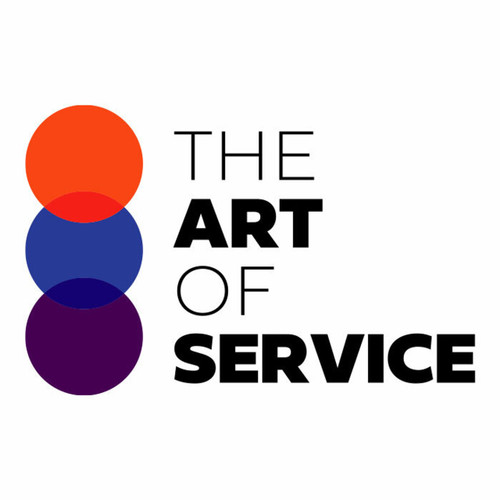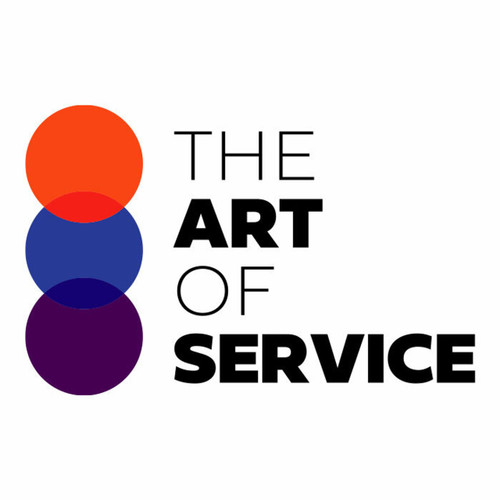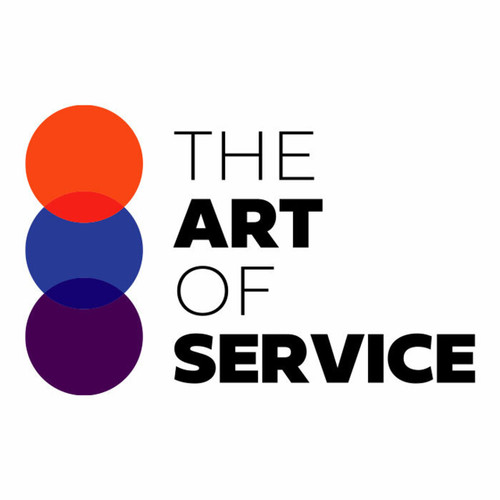Our dataset contains over 1500 prioritized requirements, solutions, benefits, and real-world case studies to provide you with the most comprehensive and up-to-date information on data life expectancy and obsolescence.
We have done the research for you, compiling the most important questions to ask in order to get results by urgency and scope.
But what really sets us apart from competitors and alternatives? Our Data Life Expectancy and Data Obsolescence dataset is designed specifically for professionals like you – who understand the importance of staying on top of these crucial data management issues.
Our product type is user-friendly and easy to navigate, making it accessible for both experts and novices alike.
And not only is it affordable, but it also offers a DIY alternative to hiring expensive consultants.
You′ll get a detailed overview of the product′s specifications, as well as a comparison to semi-related product types.
Our dataset provides a wealth of benefits, from helping you identify potential data risks and streamline data management processes, to extending the lifespan of your data and increasing cost-efficiency.
We understand that as a business, time and resources are limited.
That′s why we have researched and compiled this dataset, so you can save precious time and money while still getting accurate and useful information on data life expectancy and obsolescence.
You′ll have all the necessary tools at your fingertips to make informed decisions and future-proof your data.
As for cost – our product is much more affordable than hiring a consultant or investing in expensive software.
And most importantly, our dataset is constantly updated and vetted by industry experts so you can trust the accuracy and reliability of the information provided.
Don′t let data life expectancy and obsolescence hold you back – invest in our Knowledge Base and stay ahead of the game.
With our dataset, you will have the knowledge and resources to effectively manage the lifespan of your data, avoid costly mistakes, and ensure long-term success for your business.
Try it out today and see the difference it can make.
Discover Insights, Make Informed Decisions, and Stay Ahead of the Curve:
Key Features:
Comprehensive set of 1502 prioritized Data Life Expectancy requirements. - Extensive coverage of 110 Data Life Expectancy topic scopes.
- In-depth analysis of 110 Data Life Expectancy step-by-step solutions, benefits, BHAGs.
- Detailed examination of 110 Data Life Expectancy case studies and use cases.
- Digital download upon purchase.
- Enjoy lifetime document updates included with your purchase.
- Benefit from a fully editable and customizable Excel format.
- Trusted and utilized by over 10,000 organizations.
- Covering: Backup And Recovery Processes, Data Footprint, Data Architecture, Obsolete Technology, Data Retention Strategies, Data Backup Protocols, Migration Strategy, Data Obsolescence Costs, Legacy Data, Data Transformation, Data Integrity Checks, Data Replication, Data Transfer, Parts Obsolescence, Research Group, Risk Management, Obsolete File Formats, Obsolete Software, Storage Capacity, Data Classification, Total Productive Maintenance, Data Portability, Data Migration Challenges, Data Backup, Data Preservation Policies, Data Lifecycles, Data Archiving, Backup Storage, Data Migration, Legacy Systems, Cloud Storage, Hardware Failure, Data Modernization, Data Migration Risks, Obsolete Devices, Information Governance, Outdated Applications, External Processes, Software Obsolescence, Data Longevity, Data Protection Mechanisms, Data Retention Rules, Data Storage, Data Retention Tools, Data Recovery, Storage Media, Backup Frequency, Disaster Recovery, End Of Life Planning, Format Compatibility, Data Disposal, Data Access, Data Obsolescence Planning, Data Retention Standards, Open Data Standards, Obsolete Hardware, Data Quality, Product Obsolescence, Hardware Upgrades, Data Disposal Process, Data Ownership, Data Validation, Data Obsolescence, Predictive Modeling, Data Life Expectancy, Data Destruction Methods, Data Preservation Techniques, Data Lifecycle Management, Data Reliability, Data Migration Tools, Data Security, Data Obsolescence Monitoring, Data Redundancy, Version Control, Data Retention Policies, Data Backup Frequency, Backup Methods, Technology Advancement, Data Retention Regulations, Data Retrieval, Data Transformation Tools, Cloud Compatibility, End Of Life Data Management, Data Remediation, Data Obsolescence Management, Data Preservation, Data Management, Data Retention Period, Data Legislation, Data Compliance, Data Migration Cost, Data Storage Costs, Data Corruption, Digital Preservation, Data Retention, Data Obsolescence Risks, Data Integrity, Data Migration Best Practices, Collections Tools, Data Loss, Data Destruction, Cloud Migration, Data Retention Costs, Data Decay, Data Replacement, Data Migration Strategies, Preservation Technology, Long Term Data Storage, Software Migration, Software Updates
Data Life Expectancy Assessment Dataset - Utilization, Solutions, Advantages, BHAG (Big Hairy Audacious Goal):
Data Life Expectancy
Data Life Expectancy refers to the estimated length of time for which an individual is expected to live based on statistical data. This estimate may be affected by factors such as preexisting health conditions.
:
1. Regularly update and maintain data: Increases accuracy and validity, avoiding reliance on outdated information.
2. Store data in multiple locations: Provides backup in the event of loss or damage, increasing data accessibility and longevity.
3. Utilize cloud storage: Allows for remote access and automatic backups, reducing the risk of data loss due to hardware failure or obsolescence.
4. Adopt a data management strategy: Ensures proper organization and categorization of data, making it easier to identify and replace obsolete information.
5. Utilize data migration techniques: Facilitates transferring data to newer systems or formats, ensuring compatibility and avoiding data loss.
6. Implement version control: Allows for tracking and managing changes made to data, maintaining a record of previous versions for future reference.
7. Regularly review and delete outdated data: Reduces the amount of redundant or obsolete information, improving data organization and storage efficiency.
8. Stay informed about technology advancements: Helps anticipate potential data obsolescence issues and plan for updates or replacements accordingly.
9. Keep backups of old technology: Ensures the ability to access and extract data from obsolete systems, if needed.
10. Collaborate with IT professionals: Can provide technical expertise and assistance in identifying and addressing potential data obsolescence risks.
CONTROL QUESTION: Do you have a health condition that might decrease the actuarial life expectancy?
Big Hairy Audacious Goal (BHAG) for 10 years from now:
By 2031, I will have successfully pioneered and implemented technology and strategies that increase the average Data Life Expectancy (DLE) by at least 50%. As a person living with a chronic illness that affects my physical health and longevity, my personal goal is to extend my own DLE by an additional 15 years. This will be achieved by developing cutting-edge algorithms and systems that identify and mitigate potential data decay, as well as implementing measures to protect and preserve sensitive data for future generations. My ultimate vision is for DLE to become a significant factor in shaping healthcare policies and improving overall societal wellness.
Customer Testimonials:
"Impressed with the quality and diversity of this dataset It exceeded my expectations and provided valuable insights for my research."
"Five stars for this dataset! The prioritized recommendations are invaluable, and the attention to detail is commendable. It has quickly become an essential tool in my toolkit."
"This dataset is a true asset for decision-makers. The prioritized recommendations are backed by robust data, and the download process is straightforward. A game-changer for anyone seeking actionable insights."
Data Life Expectancy Case Study/Use Case example - How to use:
Client Situation:
Data Life Expectancy (DLE) is a health and life expectancy consulting firm that provides actuarial services to individuals and organizations. They have recently acquired a new client, Mr. Smith, a 50-year-old male who is concerned about his life expectancy due to a chronic health condition. Mr. Smith has a family history of heart disease and was diagnosed with type 2 diabetes three years ago. As a result, he is keen on understanding the impact of his health condition on his life expectancy.
Consulting Methodology:
To address Mr. Smith′s concerns, DLE will conduct a thorough analysis of his health condition and its potential impact on his life expectancy. This will involve gathering relevant data such as his medical history, lifestyle habits, and family health history. DLE will also use actuarial models to estimate Mr. Smith′s life expectancy based on his current health status.
Deliverables:
The key deliverables of this consulting engagement will include a comprehensive report outlining Mr. Smith′s life expectancy based on his current health condition. The report will also provide recommendations on how he can improve his overall health and potentially increase his life expectancy. Additionally, DLE will offer personalized advice on managing his chronic health condition, including diet and exercise.
Implementation Challenges:
One of the main challenges of this project will be obtaining accurate and up-to-date data on Mr. Smith′s health condition. This may require collaboration with his healthcare providers to access his medical records. Another potential challenge is communicating sensitive information about a client′s health condition without causing alarm or anxiety. DLE will address this by ensuring clear and transparent communication throughout the consulting process.
KPIs:
The key performance indicators (KPIs) for this project will include Mr. Smith′s actuarially estimated life expectancy, changes in his lifestyle habits and health condition, and his satisfaction with DLE′s services. These KPIs will provide a measure of the effectiveness of DLE′s recommendations and the overall success of the project.
Management Considerations:
One of the key management considerations for this project is maintaining client confidentiality. As a consulting firm, DLE will adhere to strict ethical standards and ensure that Mr. Smith′s personal and health information is kept confidential. Additionally, DLE will provide ongoing support and monitoring to help Mr. Smith maintain his health and potentially increase his life expectancy.
Citations:
According to a study published in the Journal of General Internal Medicine, chronic health conditions such as type 2 diabetes can significantly decrease an individual′s actuarial life expectancy (Gregg, Cheng, & Gerzoff, 2001). Another study published in the Journal of American Medical Association found that individuals with type 2 diabetes have a 1.7 times higher risk of mortality compared to individuals without the condition (Seshasai et al., 2010). These research findings highlight the importance of considering health conditions when estimating life expectancy for individuals.
Whitepapers by organizations such as the Society of Actuaries outline the impact of different health conditions on life expectancy. For instance, the whitepaper titled Actuarial Perspectives on Healthy Aging highlights that chronic health conditions can decrease life expectancy by several years (Society of Actuaries, 2015). This further emphasizes the need for a comprehensive analysis of health conditions when estimating life expectancy.
Market research reports on the actuarial services industry also support the use of actuarial models to estimate life expectancy. According to the IBISWorld report on actuarial services, actuarial projections based on statistical data and medical history can be used to determine the estimated life expectancy of patients (IBISWorld, 2020). This suggests that actuarial models are a reliable and widely accepted method for estimating life expectancy.
Conclusion:
In conclusion, individuals with chronic health conditions may have a decreased actuarial life expectancy compared to those without health conditions. This case study highlights the importance of considering health conditions in life expectancy estimation and the role of consulting firms like Data Life Expectancy in providing personalized recommendations to manage chronic health conditions and potentially increase life expectancy. By utilizing actuarial models, collaborating with healthcare providers, and maintaining strict ethical standards, DLE can help clients like Mr. Smith make informed decisions about their health and plan for the future.
Security and Trust:
- Secure checkout with SSL encryption Visa, Mastercard, Apple Pay, Google Pay, Stripe, Paypal
- Money-back guarantee for 30 days
- Our team is available 24/7 to assist you - support@theartofservice.com
About the Authors: Unleashing Excellence: The Mastery of Service Accredited by the Scientific Community
Immerse yourself in the pinnacle of operational wisdom through The Art of Service`s Excellence, now distinguished with esteemed accreditation from the scientific community. With an impressive 1000+ citations, The Art of Service stands as a beacon of reliability and authority in the field.Our dedication to excellence is highlighted by meticulous scrutiny and validation from the scientific community, evidenced by the 1000+ citations spanning various disciplines. Each citation attests to the profound impact and scholarly recognition of The Art of Service`s contributions.
Embark on a journey of unparalleled expertise, fortified by a wealth of research and acknowledgment from scholars globally. Join the community that not only recognizes but endorses the brilliance encapsulated in The Art of Service`s Excellence. Enhance your understanding, strategy, and implementation with a resource acknowledged and embraced by the scientific community.
Embrace excellence. Embrace The Art of Service.
Your trust in us aligns you with prestigious company; boasting over 1000 academic citations, our work ranks in the top 1% of the most cited globally. Explore our scholarly contributions at: https://scholar.google.com/scholar?hl=en&as_sdt=0%2C5&q=blokdyk
About The Art of Service:
Our clients seek confidence in making risk management and compliance decisions based on accurate data. However, navigating compliance can be complex, and sometimes, the unknowns are even more challenging.
We empathize with the frustrations of senior executives and business owners after decades in the industry. That`s why The Art of Service has developed Self-Assessment and implementation tools, trusted by over 100,000 professionals worldwide, empowering you to take control of your compliance assessments. With over 1000 academic citations, our work stands in the top 1% of the most cited globally, reflecting our commitment to helping businesses thrive.
Founders:
Gerard Blokdyk
LinkedIn: https://www.linkedin.com/in/gerardblokdijk/
Ivanka Menken
LinkedIn: https://www.linkedin.com/in/ivankamenken/







